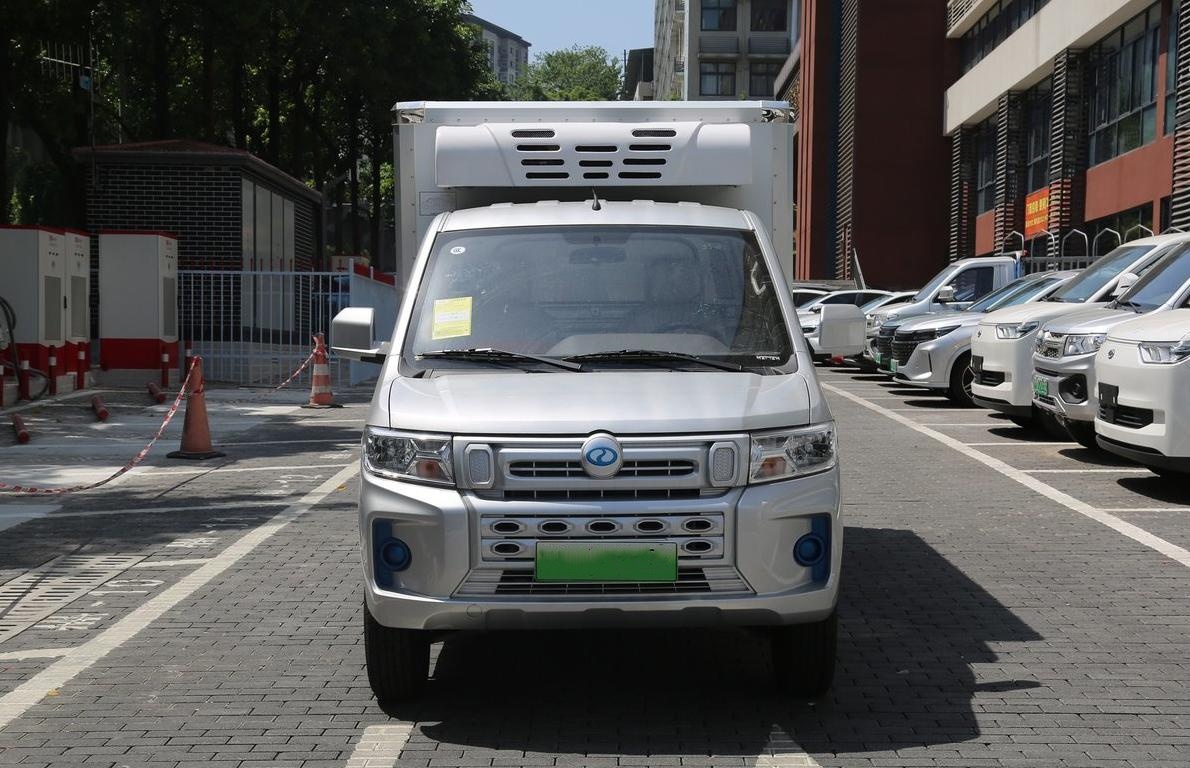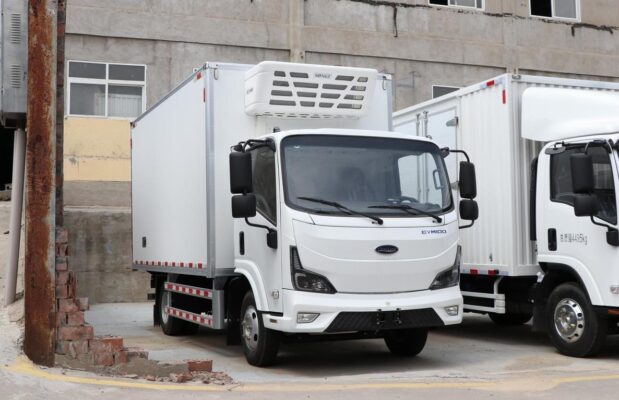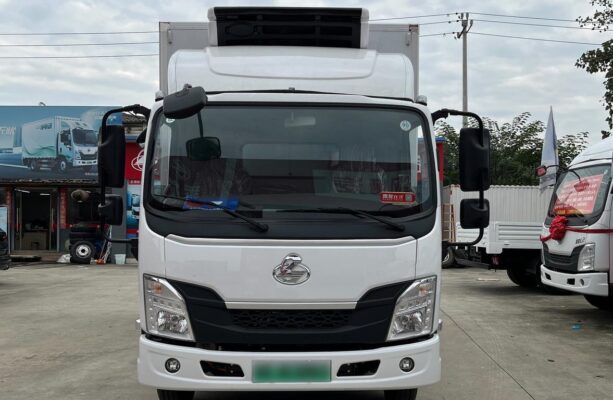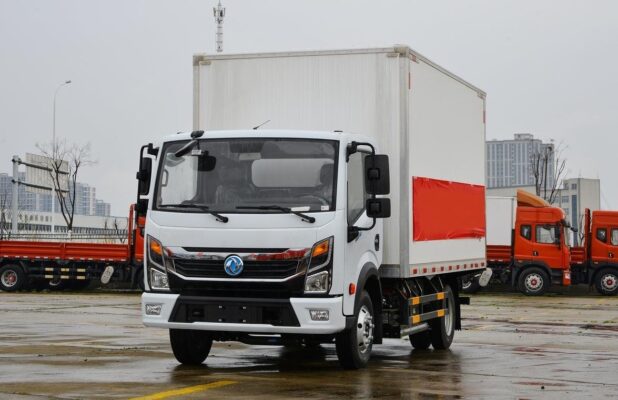የኤሌክትሪክ መኪና ዜና
Why Are Batteries in Electric Pickup Trucks Placed at the Bottom
ውስጥ electric pickup truckኤስ, battery placement is key to vehicle performance, ደህንነት, and usability. For most electric pickups, the ideal location for the battery is at the bottom of the vehicle, often integrated into the truck’s chassis. This placement has become the industry standard for several reasons, including improved vehicle stability, increased interior space, and better safety in the event of an impact. Let’s explore why this position is so advantageous and why alternative placements, such as on the roof or within the cabin, are less practical.
1. Enhanced Vehicle Stability and Safety
The main reason for placing the battery pack at the bottom of an electric pickup truck is to improve stability and handling. Positioning the battery at the base of the vehicle lowers the truck’s center of gravity, which is crucial for stability, especially in a pickup truck that is designed for rugged use and often needs to handle large loads or uneven terrain.
- Lower Center of Gravity: The low center of gravity that comes from placing a heavy battery at the bottom makes the vehicle more resistant to tipping or rolling over, especially during high-speed maneuvers or sharp turns. This stability is essential not only for comfort but also for driver and passenger safety.
- Better Weight Distribution: In addition to lowering the center of gravity, placing the battery along the truck’s base allows for more even weight distribution. Pickup trucks are often designed to carry cargo in the bed, and having the heavy battery pack low and spread along the chassis helps balance the vehicle when the bed is fully loaded. This distribution reduces wear and tear on the truck’s suspension and tires, enhancing overall durability.
2. Optimized Interior Space and Design
Battery placement at the vehicle’s base helps to free up space in the cabin and truck bed, making electric pickups versatile for both cargo and passenger use. With the battery pack positioned outside the passenger area, designers have more flexibility to create comfortable interiors and ample storage space.
- Maximized Cargo and Passenger Space: Unlike internal combustion engines or hybrid systems, electric pickups do not require a bulky engine compartment. By positioning the battery at the bottom, engineers can optimize the layout for passenger comfort and cargo room. This setup is especially valuable for pickups, which are often used for transporting goods or equipment.
- Flexible Interior Configurations: With the battery out of the way, the interior layout becomes more adaptable to different configurations, such as extended legroom, foldable seats, or additional storage compartments. This layout flexibility makes electric pickups ideal for personal and commercial use.
3. Protection Against Damage in the Event of an Accident
The bottom placement of the battery in electric pickups also serves as a protective measure. Placing the battery outside the main cabin and securing it within the vehicle’s chassis reduces the risk of damage to the battery or harm to the passengers in the event of a collision.
- Enhanced Structural Protection: Battery packs in electric pickups are typically enclosed in robust, impact-resistant casings and are further shielded by a solid underbody structure. This setup provides a strong layer of protection, preventing the battery from sustaining damage from minor bumps or road debris.
- Safer for Occupants: By situating the battery outside the cabin area, there is less chance that a battery malfunction or overheating issue could directly affect the passengers. Even in the case of a collision, the battery’s isolated placement helps contain any potential hazards, making the truck safer for occupants.
Alternative Battery Placements and Their Challenges
While placing the battery at the bottom of the vehicle has clear advantages, other locations, such as the roof or within the interior cabin, have been considered and generally ruled out due to significant drawbacks.
Roof Placement Issues
Positioning the battery on the roof of the vehicle would significantly increase the truck’s center of gravity, which would negatively affect stability. This arrangement could make the vehicle top-heavy, increasing the risk of rollovers, particularly in challenging driving conditions like sharp turns or off-road terrains. በተጨማሪም, mounting a heavy battery pack on the roof would present design challenges and possibly affect the truck’s aerodynamics.
Interior Cabin Placement Issues
Placing the battery inside the cabin would take up valuable passenger and cargo space, compromising comfort and functionality. Besides occupying space, a cabin-mounted battery could increase the risk of harm to passengers due to potential exposure to battery heat, vibrations, እና, in rare cases, hazardous battery malfunction. በተጨማሪም, internal battery placement would make managing battery temperature and cooling more complex, which could impact efficiency and safety.
Does Bottom Placement Expose the Battery to Road Impacts?
Some may wonder whether placing the battery at the bottom of the truck increases its exposure to road impacts, potentially causing damage to this crucial component. While it is true that the bottom of the truck encounters more direct contact with road conditions, manufacturers have implemented several protective measures to keep the battery safe from harm.
- Protective Underbody Shielding: Electric pickups are equipped with sturdy underbody shields to safeguard the battery from rocks, debris, and minor road impacts. These shields are typically made from durable materials like reinforced steel or aluminum, which are resistant to scratches, dents, and other forms of wear.
- Advanced Suspension Systems: Many electric pickups are designed with sophisticated suspension systems that can adjust based on road conditions, which helps protect the battery from excessive vibration or sudden shocks. Some systems can even raise or lower the vehicle as needed, reducing the likelihood of battery damage on rough terrain.
- Shock-Absorbent Battery Enclosures: Battery packs in electric pickups are encased in shock-absorbent materials that help cushion impacts, further reducing the risk of internal battery damage. This design element ensures that the battery remains secure and functional even when exposed to challenging driving conditions.
Does Bottom Placement Affect Battery Heat Dissipation?
Because batteries generate heat during operation, effective heat dissipation is crucial for optimal battery performance and longevity. While bottom placement may initially appear to limit airflow around the battery, modern electric pickup designs incorporate advanced cooling solutions to manage battery temperature effectively.
- Integrated Cooling Systems: Many electric pickups use active cooling systems, such as liquid cooling or dedicated fans, to maintain a consistent battery temperature. These cooling systems are built into the battery assembly to regulate heat more efficiently, regardless of placement.
- Ventilation and Cooling Plates: Some manufacturers add ventilation channels or cooling plates specifically designed for battery placement at the bottom of the vehicle. These features enhance airflow and cooling capacity, ensuring the battery operates within its ideal temperature range.
- Temperature Monitoring and Management: Advanced electric pickups are equipped with sensors that monitor the battery’s temperature in real time. Intelligent thermal management systems can adjust the cooling mechanism based on conditions, further safeguarding battery health and performance.
Does Bottom Placement Complicate Maintenance and Replacement?
While the bottom placement of the battery might make accessing it for maintenance slightly more complex, electric pickups are engineered to simplify these processes.
- Modular Battery Designs: Many electric vehicles are now designed with modular battery systems, where individual battery modules can be removed and replaced without requiring the entire pack to be dismantled. This modular approach makes it easier for technicians to access and replace specific sections of the battery as needed.
- Service-Friendly Chassis Designs: Some electric pickups have been designed with service-friendly chassis that provide technicians with easy access to the battery area. Many manufacturers incorporate designated spaces and fixtures that allow for more convenient battery removal, inspection, and replacement.
- Automated Lifting Systems in Service Centers: Service centers for electric vehicles often have specialized lifting equipment to safely raise the vehicle, allowing technicians to work on the battery without manually handling the truck. This equipment streamlines maintenance, making battery-related repairs more efficient.
ማጠቃለያ: The Strategic Advantages of Bottom Battery Placement in Electric Pickups
በማጠቃለያው, placing the battery at the bottom of electric pickup trucks is a practical design choice that enhances stability, optimizes interior space, and provides robust protection for both passengers and the battery itself. Although this placement introduces unique challenges, such as potential exposure to road impacts, heat dissipation, and maintenance complexity, modern engineering and technology have provided effective solutions to address these concerns.
With the evolution of electric pickup technology, we can expect further advancements in battery protection, cooling, and accessibility. Bottom battery placement continues to be the most practical, ውጤታማ, and safe location, allowing electric pickups to maximize their performance and meet the diverse needs of today’s drivers.




